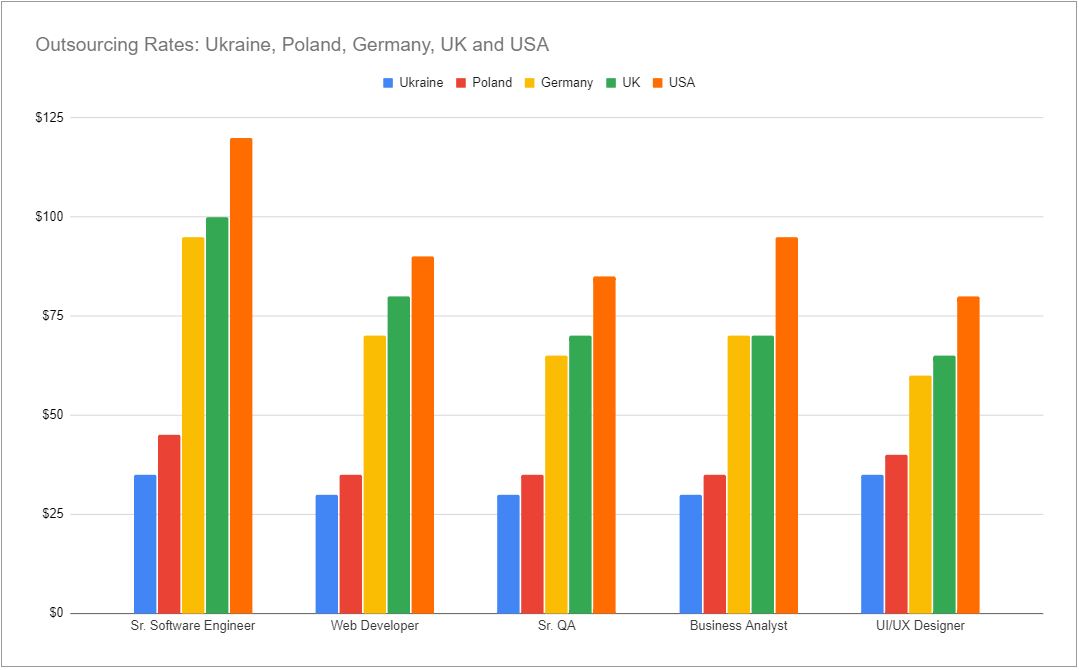Build Operate Transfer – the future of IT Outsourcing

Build Operate Transfer – the future of IT outsourcing.
With the Covid-19 epidemic still raging and local IT skills shortage getting more serious every year, as a Business Manager or Founder, you may find yourself in a position where you must set up a nearshore or offshore team in a short period of time (eg. product is innovative and need to be done in 24 months). These goals can be achieved only by setting up software development teams or software development hubs in other countries with higher IT skills potential (eg. Brazil, Poland, Ukraine, Bulgaria).
The origins of the Build Operate Transfer model
The software outsourcing Build Operate Transfer (BOT) model is defined by Gartner* as “a contractual relationship in which an organization hires a service provider to set up, optimize and run an IT or business process service delivery operation with the contractually stipulated intent of transferring the operation to the organization after an agreed period of time. BOT, as a hybrid model, combines elements of the “build” option (that is, “insourcing”) and the “buy” option (that is, outsourcing).
The definition of Build Operate Transfer model
The Build Operate Transfer term defines the collaboration between two business partners when one of them (service provider) builds, sets up, and runs a certain service delivery operation together with a team, which is responsible for completing the tasks. This team, including all its processes, resources, and intellectual property is then transferred into the other company’s (buyer) organizational structure after a period determined in the contract signed by both partners.

There are plenty of other outsourcing models, such as co-sourcing or staff leasing, team augmentation, comprehensive sourcing, and facilities outsourcing, which can be applied. However, in this case, we will focus mainly on its IT BOT outsourcing version. The companies that prefer to proceed with the Build Operate Transfer model in software outsourcing often have a vision or a plan to operate their own entity in an offshore or nearshore location. However, this means that they would want to strengthen their capabilities first and tackle or mitigate the oft-found risks that newbies have during the start-up stage. Thus, there is a need for such a company to undertake a contract with a potential, local outsourcing company to establish and operate shared services or software hub for a certain period.
Often, the software outsourcing Build Operate Transfer project lasts until the team is adapted to the company’s methodologies, processes, as well as tools. This period usually lasts 12-24 months till the owner company is ready to take over and fully operate the entity that was once being managed by the local IT partner. When that time comes, the entire team will be then officially transferred.
The main reasons behind Build Operate Transfer
1) Global IT skills shortage
As of 2021, the global talent shortage already amounts to 40M skilled workers worldwide. By 2030, the global talent shortage is predicted to reach 85.2M workers. Сompanies worldwide risk losing $8.4T in revenue because of the lack of skilled talent. The main reason for this is 90% of all operations in an average organization are supported by software, so there is a lack of tech experts ready to deliver quality services. Worldwide market and technology trends are the main factors affecting the rising global talent shortage. According to a recent survey, 87% of organizations are already experiencing a talent shortage or are expecting to face it within a few years.
Most organizations are already trying to address the talent problem. Hiring developers as contractors and freelancers have been the most widely used tactic to overcome talent needs in the past five years. But this is still not enough. Many top global companies already decided to make more structural decisions by setting up their Software Development Hubs or R&D Centers in locations with more IT-talent potential (CEE Europe, Brazil, Malaysia)
2) Security and IP protection concerns regarding traditional outsourcing
Security and intellectual property protection may also cause some concerns preventing you from swiftly adopting a pure IT outsourcing strategy (tailored rather perform specific parts of the project). According to the UK IT Outsourcing Survey conducted by PA Consulting and Whitelane Research, although the sector itself represents more than £15 billion of annual IT spend across more than 240 of the largest users of IT services in the UK, there are two main concerns among clients. 75% of them worry about ‘retaining and owning their own intellectual property, and 75% want to keep ‘agile ways of working as their main organizational model.
Choosing and setting up the right outsourced team sounds like an impossible task, especially if you’re pressed for time, but there’s a little-known collaboration model that may fit your needs by allowing you to keep the intellectual property rights within your company and to operate following the Agile principles.
3) Long-term, permanent cooperation
To complete this objective, you might be looking for operational models to follow or a reliable, permanent technological partner (nearshore / offshore vendor), that will not just offer five-star services from anywhere on Earth, but will also share your organizational values, procedures, and all potential risks of this ambitious business endeavor. We will discuss this complex matter further in the next paragraphs.
Who should consider the Build Operate Transfer model?
TThe BOT (Build Operate Transfer) model, which was discussed in the article below, is a business model that can assist organizations wanting to establish an offshore or nearshore software development facility.
The Build Operate Transfer BOT could be a great solution when considering:
1) extending existing local software development team capabilities by outsourcing skills from remote freelancers (long term)
2) outsourcing software development, wholly or partially, and have concerns about the impact this may have on your business, in the short and a long-term
3) setting up and operating permanently a remote software development hub abroad
The main benefits of the Build Operate Transfer model.
The Build Operate Transfer model is without a doubt the most secure and convenient collaboration model out there. It’s also the most advanced and long-lasting one. Let’s now analyze key benefits based on business practice.
1) Better Company culture alignment
As we mentioned in previous paragraphs, one of the main concerns may be that you won’t be able to keep your way of working and company culture intact while you’re outsourcing some parts of your business to a business partner. This shouldn’t be the case with BOT as the model requires you to share your best practices, process, and communication frameworks with the outsourced team right from the start. This makes the transfer stage much easier as you don’t need to spend much time familiarising the team members on how your company operates and how the information is exchanged between employees.
2) Full control over structure and processes
You can share your existing project management process, Agile methodology processes, and methods with the newly created, local team. You simply need to agree on what you’d like the operational structure and processes to be within your partner’s organization, so there won’t be any concerns about things not being done the usual way, once you go into the transfer phase of the BOT model.
3) Real bond between the Team and owner Company
From the first phase of BOT, the Team knows your brand, your values, and the future. This helps to create a much stronger bond between you and your offshore / nearshore Team than in temporary outsourcing contracts (IT contractors).
4) Flexibility in management and responsiveness to changes
Agility and flexibility are kings. Covid-19 pandemic and the related crisis has confirmed that you need to stay agile and respond to what’s happening outside of your company as quickly as you possibly can. That’s why the Build-Operate-Transfer model provides you with enough flexibility to allow you to either transfer/include the team and resources much quicker than the agreed time period or, prolong it within the outsourcing cooperation model if needed.
5) Operational risk management.
Build Operate Transfer model is a collaboration tool specifically aimed at companies who have concerns related to security and IP protection with traditional outsourcing.
6) Reduced time to market.
You spend less time setting up your new local entity and managing all software development team recruitment. You can focus on priorities and outsource local projects to a local IT partner immediately after signing the contract. That means that you save time and resources on your side simultaneously developing team, launching applications onto the market faster, hence improving customer satisfaction and business performance in general.
7) Cost-effectiveness and cost control.
Due to the fact that it is your company that actually owns and operates the software development facility, it is easy for you to monitor and control all the costs. You can ensure that your budget is respected and that fixed prices for this new facility are agreed upon with your partner before starting work on any projects. Outsourcing development does not mean transferring all risks related to potential overspending or unexpected high project costs.
8) Acquiring local knowledge through a trusted source (local Partner)
The know-how of what works and what doesn’t in the local IT market is crucial for the success of any BOT project. It may be that the processes or communication style you’ve chosen for your company will not work for external teams located in other countries, even if you run them on an offshore basis. Having a reliable and experienced local IT partner is definitely an advantage. (eg it can directions on how to adapt some parts of your business operations to regional specifics) particularly if working within the Build-Operate-Transfer model is your first dive into building an international business/company.
Long-term advantages of choosing the Build Operate Transfer model.
The Build Operate Transfer is a form of Nearshore / Offshore Development Center model, which is considered the future of remote work and a solution to skill shortages. The BOT project partnership framework allows companies to mitigate risks, find new opportunities to challenge competitive advantages, and lower the cost of software development. But this is not all. The final transfer phase does not mean that the owner company and local IT partner can’t collaborate further.
NxTide for example still supports the majority of its customers by providing other crucial services like team scaling, training, and business support. This type of cooperation wouldn’t be possible without building real trust and mutual respect between both parties of the Build Operate Transfer contract.
Phase 1: Build
First, we setup your brand on our career website to make sure candidates are well informed. Then we run marketing campaings alongside direct search activities to attract the best talent to your future IT Hub.
Phase 2: Operate
Our Project Managers takes care of the onboarding, employee wellbeing and team building activities. Our role is to make sure everything runs smoothy so that you can reach scale with ease.
Phase 3: Transfer
Upon your request, we transfer the fully operational IT Hub to the Client making you the owner of the of it. You can can still take advantage of our support, so the cooperation and scaling can be continued.
The 3 phases of the Build Operate Transfer model.
The Build Operate Transfer model is a combination of building your team/company in-house and traditional outsourcing provided by a third party. Let’s now describe each phase of the whole process:
1) Build phase
The main purpose Build stage of the Build-Operate-Transfer outsourcing concept is to create an offshore or nearshore software team and equip it with everything it needs to become successful. This can contain both tangible (digital devices, office space) and intangible (knowledge transfer, partner business connections) resources. The success of this phase is crucial for the whole project to be finished within a reasonable time frame. Dependent on the scope the project usually last 1-3 months, when local IT partner tries to find the best team members for the positions. Both parties can agree whether organize additional office space or just use partner infrastructure. The Build stage is often divided into two simultaneous processes. One is centered around building the perfect team for the project and it can include sourcing the candidates, interviewing them, and then hiring with all legal activities completed. The other is focused on transferring resources and knowledge, so the offshore / nearshore team can complete their tasks as they would if they were a part of your company.
2) Operate phase
This is the phase where the real work happens, it’s also the crucial stage of the collaboration. Although this stage has many variations depending on the BOT agreement between parties – let’s take o closer look at some typical operations:
a) Team expansion and training – proportionally to the growing project needs
b) Project planning and first deliverables
c) Process implementation to ensure the technical abilities of the team and the project’s business maturity
d) The initial transfer – lead programmers, project managers, and team leaders into the partner’s company The goal here is achieving stability and a fully operational development process. This will be crucial down the line when you move to the Transfer stage and will make it smoother.
Communication is one of the most crucial aspects of the Operate stage. You maintain all of the teams working in unison rather than as separate groups by making sure that you connect with your business partner and team members on a daily basis, through weekly or bi-weekly retros and monthly all-hands meetings.
The project in the Operate stage can be also managed by the owner company. Actually, this situation happens pretty often. The local IT partner is more focused on delivering valuable team members on time and advising the client rather than project management.
3) Transfer phase
This is a closing stage of the Build Operate Transfer model where after a thorough review, the teams that were working on your project are now being included in your company. Your vendor’s employees are now employed by you. If everything goes well in the two earlier stages, this stage should be going very smoothly.
This is also the stage when you look back and analyze the partnership and all phases. But is it the end? Good relations, keeping project deadlines and general team success usually coincide with extending cooperation between both companies to other tasks like team scaling, ad hoc recruitment or additional advisory services, training.
Finding a Build Operate Transfer local partner.
You’d probably find hundreds of local HR agencies or IT outsourcing providers in every location in the world. But it isn’t that easy to find a specialized, local IT BOT partner. Let’s now analyze what describes the perfect BOT provider and what is worth analyzing from the owner company perspective:
1) BOT Specialization
As we mentioned earlier – a reliable provider is focused on the BOT model. In other words, there is no option for short-term outsourcing or acquiring 1 developer. The real Build Operate transfer partner should focus its efforts only on “building long-term software development teams” for future transfer. Specialization refers also to one specific industry – IT & software development. Providers offering BOT in multiple branches will never build the necessary level of competence.
2) Real know-how
BOT and team-building projects require much more IT and management knowledge from the partner than simple outsourcing or HR services. Although the HR team is crucial, there must be also a strong IT team to handle a variety of tasks and processes.
3) Experience (an IT experience!)
It’s always a good habit to do some research on LinkedIn and make sure that the partner company owners have solid experience in IT areas. The same goes for company history, customer case studies, testimonials (BOT preferred).

Why work with NxTide?
Trust: We act as your IT Business Partner – not as an HR Agency only
Experience: Over 6 years on the market
Speed: We compose teams in just several weeks
Scalability: We focus on long term cooperation & growth
Creating first BOT Software Team or Software Development Center in Poland
Poland has an extremely interesting location specially for (BOT model) between west and east. GMT+6 from New York, GMT+1 from London, GMT+0 from Berlin, Amsterdam, or Stockholm – making it a much better option than India or China. Poland is also a part of the EU which is a good proof of stability, security, and western work standards.
Although Poland is a member of the EU since 2004, it has still to offer very attractively labour costs even in the IT industry. The average rates are around 50% lower than in Europe and 60% lower than in the US. Yes, it is true that you could find more competitive countries for outsourcing – but in IT the end game is to find quality for an attractive price – not the opposite. Considering all cons of Poland the rates are still a bargain. The below table shows the differences for 5 countries.

Other related articles that might interests you:

The Global Software Developers and Tech Talent Shortage…
Home The Global Software Developers and Tech Talent Shortage - Is There a Solution? As of 2020, the world population…

Nearshore Software Development Guide
Home p{color: #1e293b; font-family: 'Inter var', ui-sans-serif, system-ui, -apple-system, BlinkMacSystemFont, 'Segoe UI', Roboto, 'Helvetica Neue', Arial, 'Noto Sans', sans-serif, 'Apple…

Scaling Software Development Teams with Nearshore Developers.
Home Scaling Software Development Teams with Nearshore Developers. When a software team reaches a certain point in its development process,…
